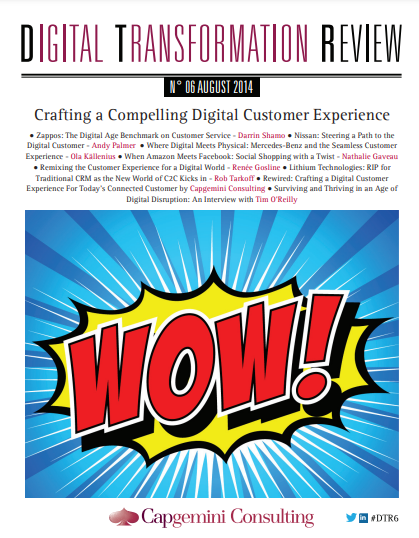 รายงาน Use Case ของการทำ Digital Transformation ในหลากหลาย Sector
รายงาน Use Case ของการทำ Digital Transformation ในหลากหลาย Sector
รูปแบบอ้างอิงเอกสารฉบับนี้ :
ห้องสมุดเอกสารสาธารณะอ้างอิงเพื่อการพลิกโฉมรัฐบาลไปสู่ดิจิทัล (Government Digital Transformation)
 รายงาน Use Case ของการทำ Digital Transformation ในหลากหลาย Sector
รายงาน Use Case ของการทำ Digital Transformation ในหลากหลาย Sector
รูปแบบอ้างอิงเอกสารฉบับนี้ :
 Many organizations, especially large ones, are struggling to implement and drive their digital transformations. In fact, only about a third of large-scale digital transformation efforts succeed. No wonder, considering the multitude of external and internal pressures and complexities that have to be addressed. External pressures snowball at the rapid pace of technological progress and corresponding changes in customer behavior. Internal legacy, complexity, stakeholders and the organization’s cultural identity often feel like a static, solid hindrance that desperately needs to be broken down and put in motion.
Many organizations, especially large ones, are struggling to implement and drive their digital transformations. In fact, only about a third of large-scale digital transformation efforts succeed. No wonder, considering the multitude of external and internal pressures and complexities that have to be addressed. External pressures snowball at the rapid pace of technological progress and corresponding changes in customer behavior. Internal legacy, complexity, stakeholders and the organization’s cultural identity often feel like a static, solid hindrance that desperately needs to be broken down and put in motion.
![]()

The Digital Transformation era has unlocked unique opportunities for organizations to disrupt and innovate with new products and services by leveraging novel emerging technologies such as mobile computing, big data analytics, cloud computing, and the internet of things. The range of possibilities provided by Digital Transformations comes at the expense of constant change across multiple levels of the enterprise including organizational structures, operational processes, business strategies, and even corporate culture. In addition, highly competitive market conditions introduced by the new digital era have forced organizations to react quicker than ever before, pressuring organizations to employ faster learning cycles that translate into shorter time-tomarket strategies. Lastly, Digital Transformations revolutionize the way in which IT andbusiness units collaborate where extremely cohesive teams are expected to continuously innovate and deliver solutions that result in enhanced customer journeys and experiences driven by new corporate cultures.
![]()